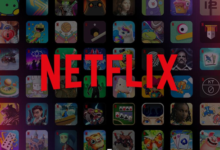Top Digital Trends of the Year: Expert Insights LogicalShout Readers Can’t Miss

Introduction
In 2025, the digital landscape is transforming faster than ever, driven by powerful technologies, shifting consumer behaviours, and rising expectations for personalised online experiences. This article explores the top digital trends of the year, offering expert insights from analysts and industry leaders. Designed with logicalshout news readers in mind, it aims to deliver accurate, insightful, and actionable perspectives. Throughout, we include references to trends and platforms such as crew disquantified.org, used for broader context but always in its own paragraph, ensuring clarity and SEO optimisation. This deep dive covers AI innovations, immersive technologies, data explosion, digital marketing evolution, privacy regulation impacts, and more.
Trends Shaping the Digital Future
1. Agentic AI and Autonomous Systems
Recent analysis highlights the rise of agentic AI—intelligent agents capable of planning and executing complex workflows on their own. McKinsey names this among the fastest-growing tech trends, as businesses adopt AI not merely for automation but as virtual coworkers capable of decision-making, coordination, and autonomous action. Such systems are increasingly embedded in workflows, from customer support bots automating multi-step operations to logistics planning agents managing supply chains. This shift marks a turning point where AI transcends narrow task execution to deliver multi‑agent orchestration.
In digital media and operations, driving growth through predictive analytics and AI integration is a priority. According to Adobe, 65 % of senior executives identify AI and predictive models as primary growth drivers in 2025, particularly for personalised engagement and operational efficiency. Meanwhile, Deloitte emphasises spatial computing, specialized semiconductors, and agentic systems as disruptive trends CFOs must understand to align financial strategy with tech innovation.
2. Personalized Advertising and AI‑Powered Media
PwC’s Global Entertainment & Media Outlook forecasts that global media revenue will hit $3.5 trillion by 2029, driven significantly by AI‑powered advertising. Digital formats are set to grow from 72 % of ad revenue in 2024 toward 80 % by 2029, with connected TV ads alone projected to reach $51 billion. This shift reflects growing consumer demand for hyper‑personalised content experiences powered by AI.
Meta Platforms is also heavily investing in AI-driven ad infrastructure—reporting a surge in ad conversion rates (≈5 %) due to generative AI recommendation engines. The company expects ad revenue gains of up to $28 billion annually by 2030 as advertisers lean into automated campaign creation and management.
Immersive Technologies & Connected Hardware
3. Wearables, AR/VR and Spatial Computing
As wearable technology enters its true era, experts expect 2025 to mark significant growth in wrist-based devices, smart glasses, and sensor‑packed wearables integrated with AI and IoT. These devices deliver real-time, context-aware data streams that enhance productivity, healthcare monitoring, and personal wellness.
Separately, virtual and augmented reality are evolving into immersive social platforms. Research indicates VR integration in social media is opening up new forms of 3D interaction—moving beyond traditional feeds into immersive environments where users engage as avatars in shared digital spaces. Spatial computing, cited by Deloitte among key disruptive trends, enables real‑time data layering into human‑machine interfaces, improving collaboration and analytics in business contexts.
The Data Explosion & Infrastructure Strain
4. Scaling Challenges in the Zettabyte Era
The digital world is overflowing with data. By 2025, IDC estimates annual data generation will hit 175 zettabytes—an exponential increase that strains data centres, power grids, and networking infrastructure. Energy efficiency, data sovereignty, and edge computing emerge as essential strategies to manage this surge sustainably.
McKinsey and other analysts warn that infrastructure scaling remains a critical challenge—compute demands from generative AI, robotics, and immersive experiences are pushing data centres to their limits, amid constrained power and supply chain issues.
Marketing Evolution & Consumer Engagement
5. Real-Time Personalization & Social Commerce
Per reports from IAB Spain and Adevinta, marketers are leveraging AI for real-time personalization—adapting campaigns based on live consumer behaviours, sentiment inference, and interactive content formats. Younger demographics value authenticity and emotional resonance, demanding brands combine AI-driven efficiency with genuine voice and transparency.
Influencers and content creatives are exploring live social shopping—platforms like TikTok and Instagram allow viewers to make instant purchases during livestreams. Gary Vaynerchuk predicts this form of commerce will reshape retail globally, especially as live‑stream formats gain traction outside China.
Regulation, Privacy & Ethics
6. AI Governance, Disinformation Control & Privacy Legislation
The trillion-dollar race in AI infrastructure by Meta, Amazon, and Google presents regulatory and ethical complexities. The Guardian reports that these companies are investing tens of billions in AI infrastructure, raising concerns about environmental impact and intellectual property usage—particularly as artists sue over unauthorized training data use.
In parallel, new legislation—like the UK’s Online Safety Act—mandates stringent age verification online, driving VPN usage and fueling debates on surveillance versus user privacy. Analysts also highlight the importance of AI governance, disinformation security, and quantum-resistant cryptography among 2025’s strategic tech priorities.
Sector Spotlight: Health, Accessibility & Data Agents
7. AI in Wellness and Assistive Technology
Recent consumer surveys show over a third of Americans now use AI for health management—checking medical information (31 %), planning meals (25 %), and accessing emotional support (20 %). AI ushers in more accessible healthcare guidance, though trust remains highest in medical professionals.
In tandem, research on digital accessibility explores how AR/VR tools can improve telemedicine and assistive services for users with disabilities. These emerging solutions promise more inclusive access to care, but face challenges in cost, implementation, and regulatory compliance.
External Perspective: crew disquantified.org
One community project platform, crew disquantified.org, provides citizen science insights and collaborative analytics for digital behaviour studies. It offers tools for tracking media consumption patterns, algorithmic exposure, and digital well‑being metrics. While not part of LogicalShout’s core reporting, crew disquantified.org is increasingly referenced in academic circles for crowd‑sourced data on platform governance and usage trends. Its user‑generated research complements mainstream analyses, though the platform remains niche and specialised.
Why LogicalShout News Readers Should Care
LogicalShout values clarity, accuracy, and ethical reporting. As a trusted source, logicalshout news delivers well‑researched and unbiased content that avoids sensationalism, helping readers stay informed about trends that matter without hype.
Our editorial team ensures content is understandable yet comprehensive—covering underlying mechanics, regulatory contexts, and real-world business applications. Whether you’re a marketer, technologist, or curious reader, LogicalShout equips you with expert insights that cut through noise.
What The Future Holds: Actionable Takeaways
Recommendations for Businesses and Professionals
- Invest in Agentic AI and Autonomous Tools: Use AI agents to reduce manual workflows and improve decision-making. But also invest in governance, ethics, and model transparency.
- Embrace immersive content and wearable integrations: Build platforms or services compatible with AR/VR and spatial interfaces for enhanced engagement.
- Prioritize personalization with privacy: Use real‑time data analytics to tailor experiences—but align with privacy regulations and consumer trust measures.
- Build resilient infrastructure strategies: Explore edge compute, modular AI hardware, and sustainable data centre designs to cope with Zettabyte Era demands.
- Monitor legislation and governance frameworks: Understand local digital safety laws, AI regulation trends, and IP rights to safeguard your operations.
- Leverage community methods like crew disquantified.org for supplemental insights: While not mainstream, such platforms can enrich research and help measure public interaction impacts.
Conclusion
This year’s digital trends—from agentic AI and immersive technologies to AI‑powered advertising, data infrastructure, and emerging regulation—are transforming how we live, work, and engage. Readers of logicalshout news benefit from a platform committed to clear, verified reporting that emphasises accuracy and context. Meanwhile, external resources like crew disquantified.org offer complementary citizen‑driven perspectives on media usage and algorithmic transparency.
Staying ahead requires not only awareness of emerging tools but a nuanced understanding of their ethical, societal, and technical implications. With these expert insights, marketers, technologists, and knowledge‑seekers are better equipped to navigate the digital frontier with confidence.






